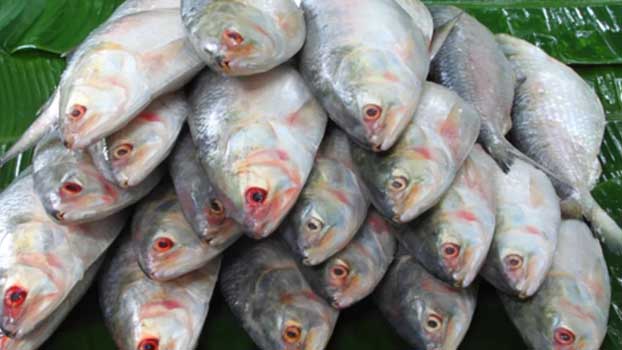Govt measures help multiply hilsa harvest

The government’s strict measures during the breeding period have continued contributing to increase hilsa production across the country as fisheries experts and ichthyologists have attributed collaborative management to the success.
They said, the main catalyst behind mega-production was, as part of the campaign to protect mother hilsa, the fishing season is barred for 22 days from October 7 to October 28 every year during the main breeding season for hilsa. At that time, the government provided assistance to the listed fishermen under the social security program.
Hilsa production has steadily increased in the last ten years. In comparison, neighboring India, Myanmar, Sri Lanka, and Pakistan have seen a decline in hilsa production. India is the second-largest producer of hilsa after Bangladesh.
According to statistics, in 2007-08, the production of hilsa in the country was 290,000 metric tons. Later in 2018-2019, it has increased to 5 lakh17 thousand metric tons. Breaking that record in 2019-2020, so far the production of hilsa has increased to 5 lakh 33 thousand metric tons. In other words, hilsa production in the country has spiked by about 84 percent in the last 11 years.
Ichthyologist BadrulAlam told the Bangladesh Post that, 10-11 years ago, hilsa could be found in the rivers of 21 upazilas of the country. At present, hilsa is available in rivers of 125 to 130 upazilas. Hilsa sanctuaries cover about 7,000 square kilometers in the country.
“Due to the continuous growth of hilsa production, Bangladesh is considered as a role model of hilsa production. Bangladesh topped the place in hilsa production.”
Due to the government’s initiatives and awareness of the general public, the production size and weight of hilsa in Bangladesh have increased in the last three years, he added.
Yahia Mahmud, Director General of the Fisheries Research Institute said, “All the steps taken to increase the production of Hilsa in Bangladesh were based on scientific research.”
And the government agencies have worked together with the law enforcement agencies to protect the hilsa sanctuaries and not to catch hilsa during the ban, he mentioned.
In this regard, Fisheries and Livestock Minister S M RezaulKarim told the media that, "We have reached here because we succeeded in stopped catching mother Ilish and Jatka. Expansion and protection of sanctuaries for the growth of Hilsa has also played a role in this regard.
He also said, with the redesigning of the hilsa catching net, the production of hilsawill increase in the coming days.
In a fresh move, the government is going to pick up a new scheme to increase hilsa production further so that the national fish is available all the year round.
According to the Planning Commission, a Tk 2.46 billion project titled ‘Hilsha Resource Development and Management’ has been proposed to be implemented by June 2024 with this regard, he said.
The move comes as the delicious fish is still outside the reach of a major portion of the country’s population despite its increased production in recent years supported by various steps of the government.
With the new scheme, the government eyes to raise hilsa’s annual production to six lakh metric tons from current 5.34 lakh tonnes through stricter enforcement of the law to preserve mother fish and fish fries.
Under the scheme, six fish sanctuaries will be created and mother fish catching will be stopped in the rivers of lower Meghna, the lower Padma, the Tetulia and the Andharmanik during the breeding season.



